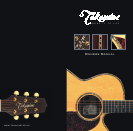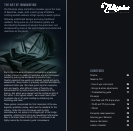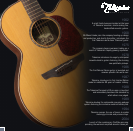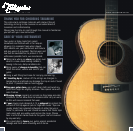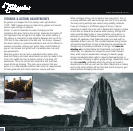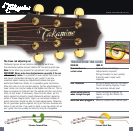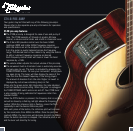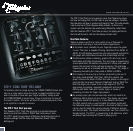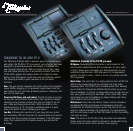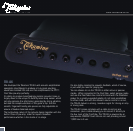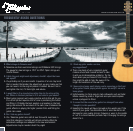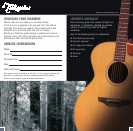
08 09
BRING
IT TO LIFE
The bone nut, tuning machines and stringing
STRINGS & ACTION ADJUSTMENTS
All guitars are shipped from the factory with light/medium
(.012" -.054") gauge strings on steel string guitars and normal
tension nylon strings on classics.
‘Action’ is used to describe the ease of playing and the
resistance felt when fretting the strings. Generally the higher off
the fingerboard the strings are the higher the action setting is.
The setting is measured as the distance between the top of the
12th fret to the underside of the 6th and 1st strings. However
the action setting is a personal preference and can be difficult to
measure accurately. Unless your guitar feels uncomfortable to
play or has obvious string/fret buzz it probably does not need
any adjustments.
Takamine guitars are set with a standard action before they
leave the factory and small adjustments are also be made to the
truss rod, saddle and nut at quality control in the Korg U.K
warehouse. This is to correct any movement that may have
occurred during shipping. This extra care ensures that your
guitar is in a fine playable condition that suits the requirements
of most guitarists and retains optimum volume and tone.
When changing strings, do not wind on too many turns, 3 or 4
is usually sufficient with wound strings and 4 to 5 turns on plain.
Too many string windings can cause tuning stability problems.
If you are changing to a different gauge of string it may be
necessary to adjust the truss rod to balance the change in stress
on the neck to restore the previous action setting. Strings that
seem uncomfortably higher or have significant string buzz in a
particular area of the fretboard indicate an adjustment may be
needed. All Japanese made Takamine guitars are built with an
adjustable bi-flex truss rod. This counter-balances string tension
and permits adjustment of neck straightness to compensate for
changes due to humidity conditions or strings. The
truss rod
adjusting nut is located below the fingerboard, just inside the
sound hole. It is adjusted to remove too much relief (forward
bow), which may be needed when changing to heavier gauge
strings and adjusted when relief is required (backward bow) i.e.
perhaps when changing to lighter gauge strings. Adjustment must
be made carefully, preferably whilst the strings are tuned to
desired pitch so that you can see the affect adjustment is making
and try the result (slacken off the third and fourth strings to gain
access without damaging the strings).
www.takamine.co.uk



